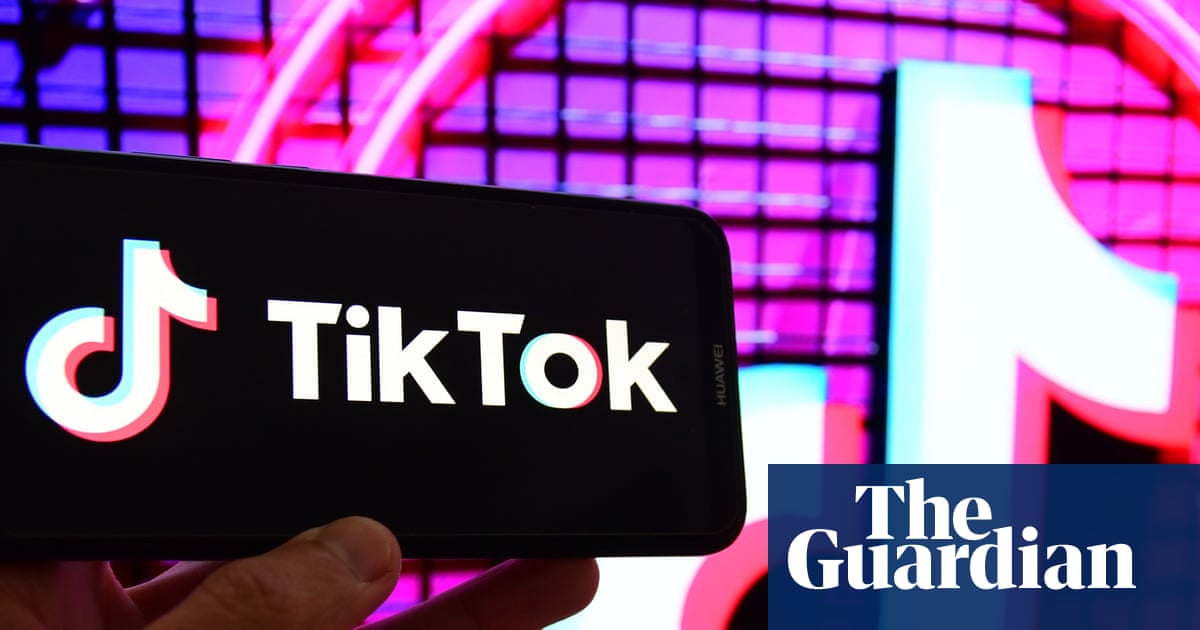Can a nearly century-old foundation in Indonesia solve one of education’s most persistent problems using technology that barely existed a decade ago?
Salib Suci Foundation, established in 1927, belives that blockchain-based credentials will eliminate fraud, reduce verification time from weeks to seconds, and give 14,000 students across 70 schools control over their academic records in a country where 66% of the population lacks access to traditional banking.
The partnership between Salib Suci Foundation, Space and Time, and Indomobil Group marks the first K-12 implementation of blockchain credential verification in Indonesia following Universitas Gadjah Mada’s adoption of the same system for 60,000 university students in September 2025. The combined initiative now reaches 124,000 students, storing proof of course completion on SXT Chain with SXT tokens used for direct enrollment payments. This deployment arrives as Indonesia ranks third globally in cryptocurrency adoption with 22.11 million registered crypto investors and positions blockchain as a cornerstone of its national digital transformation strategy.
The move addresses multiple systemic failures in traditional credentialing. Research shows that 64.2% of Americans have lied on their resume at least once, while the global fake degree market reached $22 billion in 2022, up from $1 billion in 2015. Traditional verification processes take 72 hours to 14 days and cost employers $20 to $123 per check, with UK institutions alone spending approximately £21.6 million annually on 1.8 million verification checks. Universities using blockchain credentials report 30% fewer fraud cases and 40% higher user satisfaction, with verification time reduced to seconds.
How blockchain credentials work
Understanding blockchain credentials requires no background in cryptography or distributed systems. The technology operates through three parties: an issuer (the school or university), a holder (the student), and a verifier (an employer or another institution). When a student completes a course, the issuing institution creates a digital credential, signs it with a private cryptographic key, and publishes its corresponding public key on the blockchain. The student receives the credential in a digital wallet, similar to a secure smartphone app. When applying for a job or further education, the student shares the credential with an employer, whose system automatically checks the digital signature against the institution’s public key stored on the blockchain. Verification happens in seconds with zero fraud possibility.
The critical distinction from traditional systems lies in data storage. Personal information and the credential itself remain off the blockchain, stored in the student’s encrypted wallet. Only the issuer’s public key and cryptographic commitments (digital fingerprints of data) reside on the blockchain, preserving privacy while enabling verification. This architecture means that unlike centralized databases vulnerable to breaches costing an average of $4.88 million globally in 2024, blockchain credentials distribute data across a network with no single point of failure. Students control when and with whom to share their credentials without repeatedly contacting the issuing institution.
Space and Time’s implementation adds a layer of sophistication through zero-knowledge proofs, specifically their Proof of SQL technology. This cryptographic method allows verification of facts without revealing underlying information. For example, an employer could verify that a student completed an English fluency course without accessing the student’s test scores, personal details, or full academic record. The system generates a mathematical proof that the credential is authentic and the data hasn’t been tampered with, which can be checked in approximately 150,000 gas on Ethereum Virtual Machine compatible chains. This verification cost is negligible compared to traditional methods while providing cryptographic certainty impossible with paper certificates or PDF documents.
Indonesia’s education system creates perfect conditions for blockchain adoption
Indonesia operates one of the world’s largest education systems with 52 million students, 3 million teachers, and approximately 400,000 schools. Despite this scale, the system faces challenges that blockchain credentials directly address. In 2018, 70% of Indonesian 15-year-old students performed below minimum competency in literacy and numeracy. Internet penetration reached 79% in 2024 with 180 million smartphone users, yet a significant digital divide persists between urban and rural areas, with rural populations often lacking connectivity and devices. The country’s 66% unbanked population creates payment barriers for educational services, while credential fraud remains a persistent problem in a country where only 49% of American employers verify education credentials, partly due to cost and complexity.
The government’s digital transformation initiatives create supportive infrastructure for blockchain education. Indonesia’s Digital Roadmap 2021-2024 focuses on modernizing digital infrastructure through the Palapa Ring project for nationwide connectivity, accelerating digital government, strengthening the digital economy, and building digital literacy. The National Strategy for Artificial Intelligence 2020-2045 prioritizes education and research alongside health, bureaucratic reform, and food security. The Merdeka Belajar (Emancipated Learning) initiative launched in 2019 aims to improve learning outcomes by reducing rote learning and integrating technology into curriculum. Indonesia’s regulatory framework evolved significantly with POJK No. 27/2024 in December 2024, which reclassified crypto assets as “digital financial assets” and transferred supervision to the Financial Services Authority. The country’s Indonesia Digital Vision 2045 explicitly identifies blockchain as a cornerstone for national growth targeting a $4.5 trillion economy.
Indonesia’s cryptocurrency adoption provides essential user readiness for blockchain education initiatives. The country ranks third globally in crypto adoption after India and Nigeria according to Chainalysis 2024 data, with $157 billion in crypto value inflows from 2023 to 2024 and 22.11 million registered crypto investors representing 21.16% growth from the previous year. Total crypto-asset transaction volume grew from IDR 122 trillion in January-November 2023 to IDR 556.53 trillion in the same period of 2024, a 356% year-on-year increase. The government is testing blockchain-based digital certificates for land ownership and certificates of competencies for the education sector to combat fraud and verify authenticity using on-chain data. With 70% of the population of working age and a median age of 30 representing a digitally savvy, mobile-first generation, Indonesia demonstrates demographic advantages for technology adoption that many developed nations lack.
Salib Suci Foundation’s 97 years of education meet cutting-edge technology
Salib Suci Foundation traces its origins to August 17, 1927, when three priests from the Order of the Holy Cross founded Heilige Kruis Stichting with 100 guilders in capital. The organization changed its name to Yayasan Salib Suci on July 27, 1960, and today operates under the Diocese of Bandung with headquarters at Jl. van Deventer 18, Bandung 40112. The foundation’s 70 schools serve approximately 14,000 students across West Java, including locations in Bandung, Karawang, Purwakarta, Subang, Tasikmalaya, Cirebon, Indramayu, and other cities. Schools range from preschool and kindergarten through senior high school, focusing on developing “learners who are intelligent and of good character” through three aspects: spiritual attitude (religious education and guidance counseling), knowledge (with special attention to English and Mandarin languages), and skills (arts, sports, and computer media).
Pastor Leo van Beurden, OSC, serves as chairman of Salib Suci Foundation and views the blockchain initiative as aligned with the foundation’s mission of holistic education. “At Salib Suci, we’ve spent nearly a century building trust in education, but we know that trust needs to extend beyond our walls. By adopting Space and Time’s platform, we’re giving our students credentials that travel with them, credentials that cannot be forged and can be verified anywhere in the world,” van Beurden stated. The foundation’s implementation focuses initially on English-language fluency test credentials for its approximately 14,000 K-12 students, with course completion proof recorded on SXT Chain. Students receive digital wallets preloaded with SXT tokens to pay for course enrollment directly, eliminating cash transactions and intermediary fees while providing a payment solution for families without traditional bank accounts.
The foundation’s adoption strategy leverages Indonesia’s existing educational technology landscape. The country’s EdTech market grew from $112 million in 2019 to $906 million in 2022, with projections reaching $1.8 billion by 2027 at a 15% CAGR. Major platforms like Ruangguru, which hosted over 1 million students in the first two months of COVID-19, demonstrate Indonesian students’ readiness for digital learning tools. Salib Suci’s blockchain implementation builds on this foundation by adding verifiable credentials to educational content, creating a complete ecosystem where students learn, prove their learning, and control their academic records. The foundation’s nearly 100 years of educational service combined with cutting-edge blockchain infrastructure positions it to model a hybrid approach where traditional educational values meet technological innovation.
Indomobil Group’s expansion from automobiles into education infrastructure
Indomobil Group’s involvement in education technology represents a strategic expansion beyond its core automotive business. Founded in 1976 from the unification of PT Indohero and the original PT Indomobil, the company operates as one of Indonesia’s largest integrated automotive businesses, distributing Mercedes-Benz, Nissan, Suzuki, Hino, Kia, Volkswagen, Audi, Volvo, and numerous other global vehicle brands. With manufacturing facilities in Jakarta, Bekasi, and Purwakarta Regency, annual revenue in the billions, and public trading on the Indonesian Stock Exchange, Indomobil represents established corporate infrastructure rather than a speculative technology startup. The company’s automotive expertise would seem to have little connection to educational credentials, yet President Director Jusak Kertowidjojo articulates a clear philosophy connecting the two domains.
“Indomobil has always believed in building long-term infrastructure that supports national development. Education is a critical part of that mission,” Kertowidjojo explained. “We’re not just helping students verify their credentials. We’re helping to build the foundation for Indonesia’s digital economy, and that includes making sure every student, no matter where they are, can prove what they’ve learned and access global opportunities.” The company’s subsidiary PT Indomobil Edukasi Utama operates “Teach Cast with Oxford,” a technology-based English conversation training program partnered with Oxford University Press that delivers affordable English education to small towns and rural areas using certified American teachers. This existing education infrastructure provided the foundation for expanding into blockchain-based credentials, where Indomobil contributes corporate sponsorship, business development, and operational support to the Space and Time partnership.
The blockchain education initiative addresses a problem Indomobil understands from its financing operations. PT Indomobil Finance (91.98% owned subsidiary) provides vehicle financing, where verification of employment, income, and creditworthiness creates friction in the customer journey. Traditional employment verification takes 3-14 days and costs $20-$123 per check, with mortgage lenders typically verifying twice per loan for total costs exceeding $500 per transaction when co-borrowers are included. If blockchain credentials can verify educational qualifications instantly, the same technology could eventually streamline employment verification, income verification, and other documents required for financial services. The education implementation serves as a proof of concept for broader applications across Indomobil’s business ecosystem, demonstrating corporate strategic thinking rather than philanthropic side project.
Space and Time’s zero-knowledge database powers verifiable credentials
Space and Time emerged in 2022 as a blockchain infrastructure company founded by Nate Holiday (CEO, former global go-to-market and operations leader at Teradata) and Scott Dykstra (CTO, former VP of Cloud Engineering at Teradata), backed by Microsoft’s M12 Ventures with over $50 million in funding including a $20 million Series A in August 2024. The company describes itself as “the blockchain for ZK-proven data” and “crypto’s first verifiable, decentralized, zero-knowledge proven database.” The platform functions as a decentralized data warehouse that indexes blockchain data from major chains including Ethereum, Bitcoin, ZKsync, Polygon, Sui, Avalanche, and Aptos, allows developers to join on-chain and off-chain data using SQL queries, and provides cryptographic proofs that data and query results remain tamper-proof.
SXT Chain, Space and Time’s Layer 1 blockchain, launched on mainnet (following testnet announcement at Chainlink SmartCon) specifically to deliver zero-knowledge proven data to smart contracts and AI agents. The architecture consists of four integrated components. Indexer nodes collect and decode blockchain data from genesis block forward using lightweight hardware, transforming raw data into queryable relational database tables. Validator nodes create threshold signatures on cryptographic commitments (digital fingerprints) and can secure both blockchain data and off-chain data including real-world assets, market data, and educational credentials. Prover nodes execute SQL queries against validated data and generate zero-knowledge proofs of query correctness, currently proving analytic queries on 200,000-600,000 rows sub-second and scaling to millions of rows under a minute. The ZK Rollup layer built on ZKsync’s Elastic Chain stack handles client payments, staking, node operator coordination, and third-party DeFi applications for liquid staking and derivatives.
Alejandro Lanapsa, Head of Partnerships at Space and Time, emphasizes the company’s focus on real-world utility rather than speculative technology.
“We built Space and Time to solve a specific problem: how do you give smart contracts access to data they can trust? In education, that problem is even more critical because credentials are the currency of opportunity. If you can’t prove what you’ve learned, you can’t access the next opportunity.”
The SXT token serves as the economic layer securing the network, with validators required to stake SXT tokens as collateral, earning network fees for honest behavior while facing slashing for malicious actions. All transactions use SXT tokens including query payments (split between validators and table owners), data ingestion fees paid to validators, verifiable compute payments for ZK proof generation, and course enrollment payments in the education implementation.
Global blockchain education market projects explosive growth despite implementation challenges
Market research firms project explosive growth for blockchain in education despite the technology remaining in early implementation stages. Business Research Insights values the global blockchain in education market at $0.35 billion in 2024, projecting growth to $9.39 billion by 2033 at a CAGR of 43.94%. Market.us estimates the blockchain in EdTech market at $2.1 billion in 2024, expecting $30.3 billion by 2034 at CAGR of 30.4%. Persistence Market Research calculates $2.4 billion in 2025 reaching $11.4 billion by 2032 at CAGR of 24.9%. Despite varying baseline estimates, all major research firms confirm CAGRs ranging from 24.9% to 43.94%, indicating 10-40x market expansion within the next decade. North America currently holds 40% market share, K-12 education captured 28.8% of market share in 2024, and blockchain education platforms generated 65.8% of total revenue in 2024.
The broader credential verification market provides context for blockchain’s growth potential. MarketsandMarkets values the identity verification market at $14.34 billion in 2025, projecting $29.32 billion by 2030 at CAGR of 15.4%, driven by over 1.1 million identity theft cases reported in the US alone in 2023 according to the Federal Trade Commission. Grand View Research projects the market from $9.87 billion in 2022 to $33.93 billion by 2030 at CAGR of 16.7%. The credential verification organization services market measures $3.5 billion in 2024 with projection to $9.2 billion by 2033 at CAGR of 11.2%, while the digital badge market grows from $312.2 million in 2025 to $969.7 million by 2032 at CAGR of 17.6%. The confluence of identity verification demand, digital credential adoption, and blockchain security positions the technology at the intersection of multiple growth markets.
Leading universities demonstrate practical implementation despite market immaturity. MIT issued digital certificates for 111 master’s graduates in 2017 using Blockcerts on Bitcoin blockchain, creating an open-source toolkit that other institutions adopted. University of Melbourne became the first Australian university to issue blockchain credentials in 2017. University of Nicosia in Cyprus began issuing diplomas with authenticity verification through Bitcoin blockchain in 2016 and operates Block.co, embraced by over 100 educational institutions and organizations worldwide. Malta became the first nation to use blockchain in education in September 2017, partnering with Learning Machine Group to issue digital certificates, training certificates, and equivalency statements. In India, Dr. APJ Abdul Kalam Technical University awarded approximately 50,000 degrees to engineering and management graduates using blockchain in September 2025. However, most implementations remain pilot projects or single-institution experiments rather than system-wide deployments, demonstrating proof of concept without proving scalability.
The $22 billion fake degree industry and 70% resume fraud rate
The credential fraud problem that blockchain aims to solve reaches staggering proportions backed by multiple research sources. A 2023 study found that 64.2% of Americans have lied on their resume at least once, representing an estimated 107.4 million Americans in the workforce, up from 55% in 2022 with Google searches for “lying on resumes” increasing 19% in 2023 versus 2022. Among 18-25 year-olds, 80.4% admitted to lying on resumes, with rates declining by age but remaining above 46% even for seniors 65 and older. Specifically regarding education credentials, 29.6% have lied about their college degree, with 54% of those lying about having a degree they don’t possess, 35.1% lying about their area of study, and 26% lying about the grade or GPA they received.
The global fake degree market reached $22 billion in 2022, up from $1 billion in 2015, with fake degree certificates and transcripts costing an average of $197.83 to purchase online. The fake degree industry in the United States alone measures over $500 million annually, with over 50% of people claiming new PhDs in the US possessing fake degrees according to some estimates. Organizations that fell victim to occupational fraud show that 43% did not run background checks on perpetrators prior to hiring, while only 49% of U.S. employers verify education credentials despite 70% of resumes containing false information according to multiple studies. When caught, 81.4% of those who lied faced consequences, with 54.9% fired or having offers withdrawn, 14.5% investigated by police, and 13.4% receiving fines.
The financial impact on organizations justifies investment in better verification systems. Organizations lose 5% of annual revenue to fraud according to the Association of Certified Fraud Examiners 2024 Report, equaling $4.7 trillion worldwide annually, with median fraud loss of $145,000 per case (up 24% from 2022) and average loss per month of $9,900 (up from $8,300 in 2022). The national average cost-per-hire measures $4,700, while hiring someone with fraudulent credentials can cost employers $17,000 or more including wasted training, poor job performance, and increased turnover. Traditional verification costs add to this burden, with UK institutions conducting 1.8 million verification checks in 2019 through HEDD at minimum £12 per check for £21.6 million annually, enough to create almost 1,000 additional graduate jobs per year. Blockchain verification systems that reduce fraud by up to 75% according to some studies while cutting verification time from days to seconds present compelling return on investment despite implementation costs.
Adopting blockchain for education requires navigating privacy regulations and technical complexity
Implementation challenges temper optimistic projections and require careful attention from institutions considering blockchain credentials. Scalability presents a significant challenge, with blockchain networks handling only limited transactions at any given time, creating delays during high volume periods. MIT Sloan Professor Stuart Madnick’s research documented 72 publicly reported blockchain security breaches from 2011-2018 with over $1 billion in losses, with sophisticated forgeries and inside jobs requiring more than blockchain verification alone. The absence of universal standards makes integration difficult, creating situations where student credentials on one institution’s blockchain cannot be easily accessible or verifiable by another institution using a different blockchain system, producing barriers to seamless sharing, credit transfers, and global credential verification.
Data privacy regulations create particular complexity for immutable blockchain records. The General Data Protection Regulation mandates the “right to be forgotten,” meaning individuals can request that personal data be erased, yet blockchain’s immutability means data cannot be altered or deleted once recorded. This fundamental contradiction creates significant challenges for GDPR compliance. A 2019 incident found child pornography images in the Bitcoin Satoshi Vision ledger that could not be removed, only filtered at the browser level, demonstrating the permanence problem. Lost blockchain keys present another irreversible problem since unlike traditional systems with password recovery mechanisms, lost cryptographic keys mean permanently lost access to credentials. Madnick warns against “jumping on the bandwagon” without caution, stating “It’s not just whether it’s breakable or not, but whether it can be misused,” and emphasizing that “blockchain is unbreakable” thinking represents dangerous oversimplification.
Organizational barriers include the critical lack of blockchain engineers and expertise, with implementation of blockchain across many sectors increasing demand for qualified blockchain resources. Financial barriers require high initial investment for complete digital transformation, presenting particular challenges for small and medium-sized institutions. Resistance to change from academic staff, uncertainty about implementation and security, and lack of management commitment slow adoption. Research in Applied Sciences notes that “the complexity of settings, the difficulty of terminology, the lack of technical expertise, and the wide range of different specifications can make it very difficult for the learners, educators, and other professional parties in the chain to understand and use this technology application.” However, properly implemented systems using W3C standards for Decentralized Identifiers and verifiable credentials, combined with zero-knowledge proofs like Space and Time’s Proof of SQL, can address many privacy concerns by keeping personally identifiable information off the blockchain while still enabling verification.
Indonesia’s position in global blockchain education adoption
Indonesia’s blockchain education initiatives occur within a broader global context of digital credential experimentation. Several U.S. states including Arkansas, Alabama, North Dakota, and South Carolina are experimenting with digital learner and employment records (also known as LERs or digital wallets), with Arizona State University’s ASU Pocket functioning as a digital wallet and portfolio capturing holistic evidence of learning in any format. The European Blockchain Services Infrastructure operates a peer-to-peer network of distributed nodes across EU member states plus Norway and Lichtenstein with 39 nodes keeping identical ledger copies, facilitating secure exchange of educational credentials across member states for multinational recognition and verification. Belgium and Italy have piloted cross-border credential verification showing the steps for issuing, storing, and verifying student identity and transcripts of records between KU Leuven and Università di Bologna.
The T3 Network initiated by the U.S. Chamber of Commerce Foundation includes over 1,500 diverse stakeholders including employers, education providers, government agencies, nonprofits, and technology partners working to enable equitable digital transformation of the talent marketplace where all learning counts, skills are used like currency, and learners and workers are empowered with data. Rob Coyle, Technical Program Manager for Digital Credentials at 1EdTech, reports “75 percent growth from 2020 to 2022” in digital credentials with “over 75 million credentials that have been issued, and there’s something like 50,000 credential providers.” Surveys show that 60% of industry experts believe more employers will migrate toward skills-based hiring selecting candidates based on abilities rather than degrees or pedigree, with 57% of experts confirming that employers will hold more value in alternative or micro-credentials.
Indonesia’s third-place global ranking in cryptocurrency adoption, 22.11 million registered crypto investors, $157 billion in crypto value inflows from 2023-2024, and 356% year-on-year increase in transaction volumes position the country ahead of most developed nations in user readiness for blockchain applications. The government’s clear regulatory framework through POJK No. 27/2024, Digital Rupiah central bank digital currency initiative, Indonesia Digital Vision 2045 identifying blockchain as cornerstone for national growth, and testing of blockchain-based certificates for land ownership and education competencies demonstrate institutional support rarely seen in other countries. With 70% working-age population, median age of 30, 79% internet penetration with 180 million smartphone users, and projected 135 million middle-class by 2030, Indonesia combines demographic advantages, technological infrastructure, and regulatory clarity that many mature markets lack. The Salib Suci Foundation and UGM implementations serve as proof that Indonesia can move from blockchain follower to blockchain leader in specific sectors.
Real solution or premature technology adoption?
The Salib Suci Foundation blockchain initiative represents a genuine attempt to solve real problems rather than technology theater. The credential fraud statistics (64.2% resume fraud, $22 billion fake degree market), verification inefficiencies (3-14 days, £21.6 million annually in UK alone), and Indonesia-specific challenges (66% unbanked, 70% of 15-year-olds below minimum competency) create legitimate business cases for new approaches. Space and Time’s zero-knowledge proof architecture addresses key privacy concerns by keeping personal data off-chain while enabling verification, and the SXT token payment mechanism solves financial inclusion problems for unbanked populations. The implementation follows proven models from MIT, University of Nicosia, and Malta while leveraging Indonesia’s cryptocurrency adoption leadership and government digital transformation initiatives.
However, critical questions remain about scalability, interoperability, and unintended consequences. The initiative covers 124,000 students across UGM and Salib Suci Foundation, yet Indonesia’s education system serves 52 million students across 400,000 schools. Scaling blockchain verification to millions of students and hundreds of thousands of institutions requires technical infrastructure, standardization, and interoperability that current implementations have not demonstrated. The absence of universal standards means credentials on Space and Time’s SXT Chain may not be easily verifiable by institutions using different blockchain platforms, potentially creating new silos rather than eliminating old ones.
The evidence suggests cautious optimism is warranted. Universities using blockchain report 30% fewer fraud cases and 40% higher user satisfaction with verification time reduced to seconds, representing measurable improvements over traditional systems. The market projections of $9.39 billion by 2033 at 43.94% CAGR indicate investor confidence backed by real adoption trends, while the digital badge market growth from $312.2 million to $969.7 million by 2032 demonstrates broader momentum toward verifiable digital credentials.
Indonesia’s unique position with world-leading cryptocurrency adoption, clear government support, young digitally-native population, and acute credential fraud problems creates conditions where blockchain education initiatives may succeed despite challenges that stalled implementations in other countries. The Salib Suci Foundation’s 97 years of educational service provides institutional credibility and long-term perspective that speculative technology pilots lack. Whether blockchain credentials become standard infrastructure or remain niche applications will depend on solving interoperability challenges, navigating privacy regulations, and demonstrating value beyond fraud prevention to include genuine improvements in educational quality and student opportunity.
Don’t forget to like and share the story!












